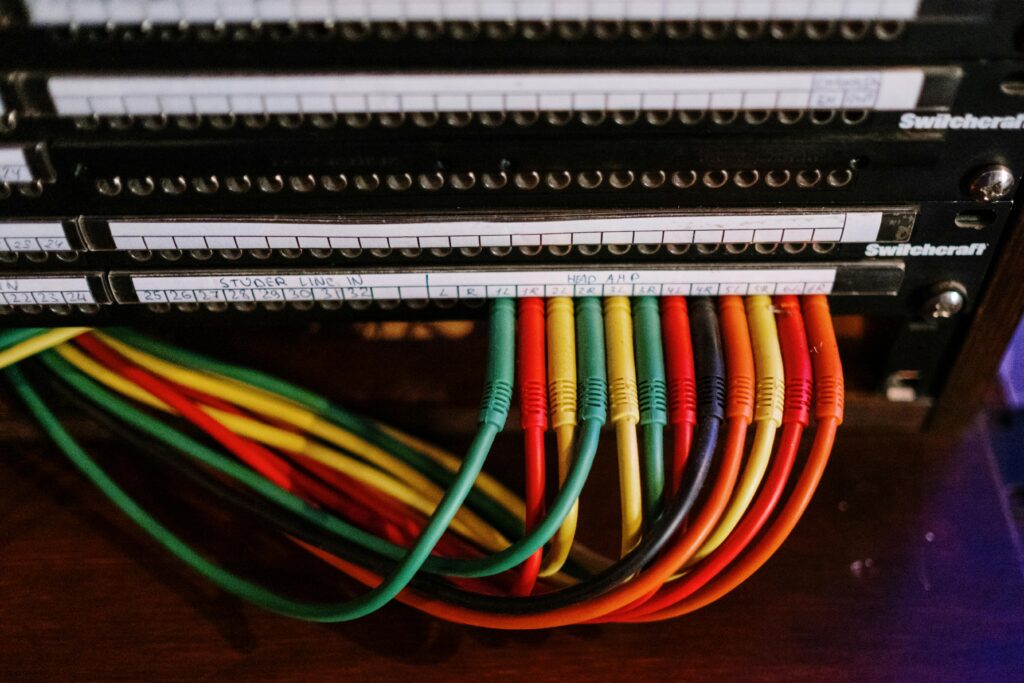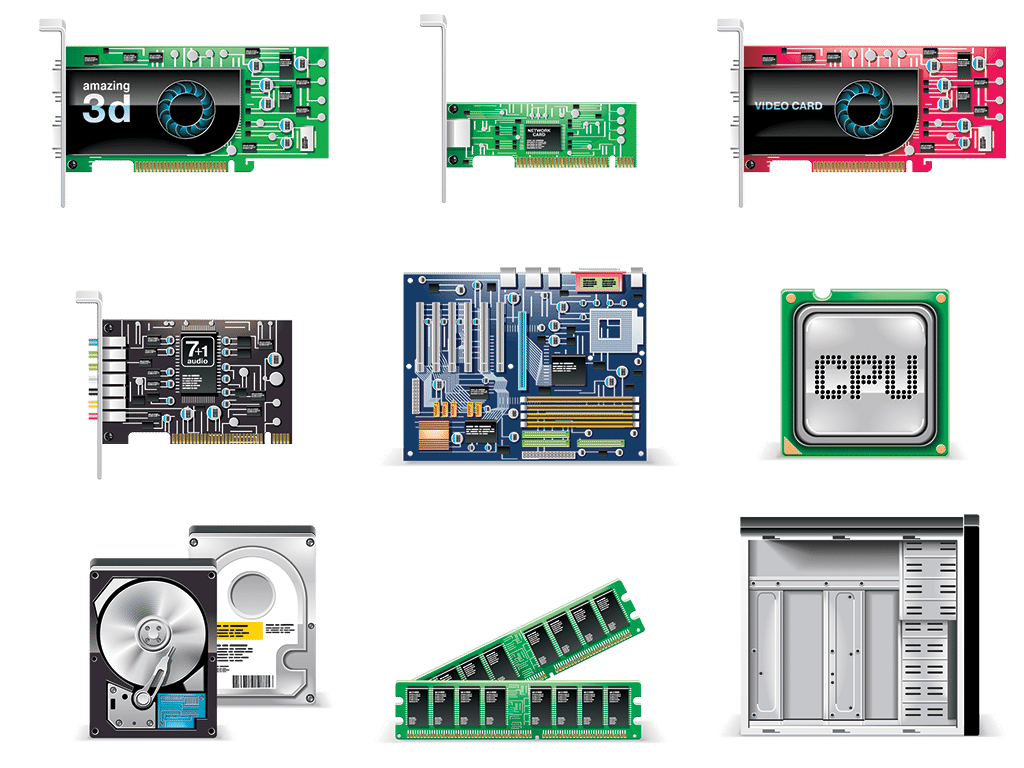The growing importance of modular infrastructure in modern data centers has become increasingly evident in 2025, as organizations seek solutions that offer flexibility, scalability, and efficiency. Modular data center systems allow businesses to adapt quickly to changing demands while optimizing resource utilization. Among the leading solutions in this space are Cisco UCS and Dell MX7000, both designed to meet the diverse needs of today’s enterprises. Proper IT asset disposition (ITAD) ensures secure, sustainable lifecycle management for retired equipment.
Cisco UCS is renowned for its integrated architecture, which combines computing, networking, and storage into a cohesive system, enabling streamlined management and reduced operational costs. Conversely, Dell MX7000 emphasizes modularity and flexibility, providing organizations with the ability to configure resources dynamically based on workload requirements.
This article aims to compare Cisco UCS and Dell MX7000 across various criteria, including performance, management capabilities, scalability, and total cost of ownership. By examining these factors in detail, we will provide insights that help organizations make informed decisions about which modular data center solution best aligns with their operational goals and budgetary constraints.
Ready to Upgrade Your Data Center? Contact our team today to learn how we can help you find the best solutions for your modular infrastructure needs!
Architecture and Design
Cisco UCS Architecture integrates compute, networking, and storage into a unified system, featuring components like the Cisco UCS Manager, Fabric Interconnects, and Blade Chassis. This architecture simplifies management, reduces cabling complexity, and enhances energy efficiency. The main advantages of UCS include its scalability and high availability; however, it can be complex to configure and may require a steep learning curve for new users.
On the other hand, Dell MX7000 Design Framework focuses on modularity and flexibility. Its design includes various modules and nodes housed within a single chassis, allowing for easy configuration and upgrades.
The MX7000 supports diverse workloads with a focus on energy efficiency, enabling organizations to optimize resource utilization effectively. The strengths of the MX7000 design include its adaptability to different environments and simplified management through Dell Technologies’ software solutions. However, it may lack the extensive ecosystem of third-party integrations that Cisco offers.
Ultimately, both systems provide robust solutions for today’s data centers, but their architectural philosophies cater to different operational needs and preferences in the enterprise market.
Compute and Processing Capabilities
In 2025, the compute and processing capabilities of Cisco UCS and Dell MX7000 are critical for organizations handling demanding workloads.
Cisco UCS Compute Power features a highly integrated architecture that supports various processor options, including Intel Xeon Scalable processors. This flexibility allows for significant scalability, accommodating up to 160 servers in a single domain. Performance benchmarks indicate that Cisco UCS achieves impressive throughput and efficiency, particularly in virtualized environments. Its power management capabilities also enhance energy efficiency, allowing for dynamic power allocation based on workload demands.
Conversely, Dell MX7000 Compute Power emphasizes modularity and flexibility. It supports multiple processor configurations, including Intel and AMD options, enabling businesses to tailor their systems to specific applications. The MX7000’s design allows for easy upgrades and scalability within a compact chassis. Benchmarks show that the MX7000 excels in performance, particularly in hybrid cloud environments where resource allocation is crucial.
Both systems provide robust compute power, but Cisco UCS stands out for its integrated management and energy efficiency, while Dell MX7000 offers superior modularity and flexibility, catering to diverse enterprise needs.
Storage Options and Flexibility
The storage options and flexibility of Cisco UCS and Dell MX7000 play a crucial role in meeting enterprise demands.
Cisco UCS Storage Options provide a variety of supported storage types, including NVMe, SSD, and HDD, with capacities that can scale to petabytes. The Cisco UCS S-Series Storage Servers are designed for high performance and rapid scalability, allowing organizations to adapt their storage solutions to meet the needs of demanding workloads. This architecture enhances compatibility with various software-defined storage solutions, enabling seamless integration into existing infrastructures.
On the other hand, Dell MX7000 Storage Capabilities emphasize modularity and flexibility. It supports multiple storage options, including NVMe and SSD configurations, allowing users to tailor their systems based on specific application requirements. The MX7000’s design facilitates easy upgrades and scalability, making it suitable for dynamic environments.
When comparing the two, Cisco UCS stands out for its extensive support for diverse storage types and seamless integration with cloud services. In contrast, the Dell MX7000 offers superior modularity, allowing for quick adjustments to changing business needs. Both systems deliver robust storage capabilities, but their approaches cater to different operational strategies within enterprise environments.
Networking Features and Connectivity
Networking Capabilities in Cisco UCS utilize a unified fabric architecture that integrates compute, storage, and networking into a single management interface. This design supports high bandwidth with options for 10, 25, and 40 Gbps connections, enabling efficient data transfer. Cisco UCS also offers flexibility in integrating with existing infrastructure, simplifying network optimization through features like Fibre Channel over Ethernet (FCoE). By reducing the number of required devices and cables, this unified approach enhances overall efficiency.
On the other hand, the Dell MX7000 Networking Design emphasizes modularity. It features interchangeable network modules that support various speeds and protocols, allowing organizations to customize their configurations based on specific needs. The MX7000 is compatible with existing network infrastructures, ensuring seamless integration. Key networking features that set the MX7000 apart include advanced network virtualization and automation capabilities.
Overall, both Cisco UCS and Dell MX7000 deliver robust networking solutions tailored to different operational requirements. Cisco UCS excels with its unified management and bandwidth efficiency, while Dell MX7000 offers greater modularity and flexibility to adapt to evolving business demands.
Management and Orchestration Tools
The management and orchestration tools of Cisco UCS and Dell MX7000 are crucial for optimizing data center operations.
Cisco UCS Management Software is anchored by Cisco Intersight, a cloud-based platform that simplifies infrastructure lifecycle management. Intersight provides a single dashboard for managing both on-premises and edge environments, enabling IT teams to automate deployments and monitor performance efficiently. The user interface is designed for ease of use, featuring customizable dashboards and automation capabilities that reduce manual tasks and errors. This streamlined approach enhances operational efficiency and allows organizations to respond quickly to changing demands.
In contrast, Dell MX7000 Management Tools utilize OpenManage Enterprise Modular, which offers comprehensive management features for the MX7000 chassis. This tool emphasizes user-friendliness, allowing administrators to manage resources easily while benefiting from automation for routine tasks. User feedback highlights the intuitive design and effective monitoring capabilities, which help identify potential issues before they impact operations.
Both management platforms excel in automation and ease of use, but Cisco Intersight stands out with its cloud-native approach and extensive integration options. Meanwhile, Dell’s OpenManage provides robust local management capabilities tailored for modular environments. Together, these tools empower organizations to optimize their data center operations effectively.
Scalability and Modularity
Cisco UCS and Dell MX7000 both offer impressive scalability and modularity, catering to the evolving needs of data centers.
Cisco UCS Scalability allows for significant expansion through its unified architecture, which supports multiple chassis managed by a single Cisco UCS Manager. This modularity enables organizations to scale up to 40 chassis, accommodating hundreds of servers seamlessly.
The main advantages of UCS modularity include simplified management and reduced cabling complexity, which enhance operational efficiency. However, potential downsides include a steep learning curve for configuration and the need for careful planning to ensure compatibility with existing infrastructure.
In contrast, Dell MX7000 Scalability and Modular Flexibility focus on a modular design that supports various configurations tailored to specific workloads. The MX7000 can easily accommodate additional compute nodes and storage modules, allowing organizations to adapt quickly to future growth. Its architecture promotes efficient resource utilization, making it ideal for dynamic environments. While the MX7000 offers significant advantages in terms of flexibility and ease of upgrades, it may face limitations in scaling compared to the extensive capabilities of Cisco UCS.
Ultimately, both systems provide robust solutions for scalability and modularity, but their approaches cater to different operational needs within enterprise environments.
Power and Cooling Efficiency
Power and Cooling Efficiency are critical factors for data centers aiming to reduce operational costs and environmental impact.
Power Consumption in Cisco UCS is designed for high efficiency, using advanced power management features that dynamically allocate power based on workload demands. This system minimizes energy waste by allowing unused resources to enter low-power states.
Cisco UCS chassis have demonstrated superior efficiency ratings, consuming up to 11.3% less power than comparable systems, which significantly impacts operating costs and enhances eco-friendliness. The integration of energy-efficient hardware components further contributes to reduced power consumption, making UCS a suitable choice for organizations focused on sustainability.
In comparison, Dell MX7000 Power and Cooling emphasizes energy-saving features and effective cooling options. Its modular design allows for efficient airflow management, which is crucial for maintaining optimal operating temperatures. The MX7000 supports various cooling configurations to adapt to different environments, enhancing overall power efficiency. While Dell’s system also prioritizes environmental impact and total cost of ownership (TCO) considerations, it may not match the same level of power efficiency as Cisco UCS.
Ultimately, both systems offer robust solutions for power and cooling efficiency, but Cisco UCS stands out for its advanced power management capabilities and lower operational costs. Data centers can also enhance sustainability through responsible electronic recycling of retired equipment.
Security Features
When comparing the security features of Cisco UCS and Dell MX7000, both systems offer robust protections tailored to safeguard enterprise environments.
Cisco UCS Security Features include built-in mechanisms for data protection and access control, leveraging a zero-trust framework that ensures comprehensive security throughout the infrastructure.
Key components such as NIST-approved encryption techniques, secure boot processes, and hardware-based isolation enhance data confidentiality and integrity. Cisco UCS also complies with industry standards, providing administrators with tools for monitoring and auditing access, which is crucial for maintaining regulatory compliance.
In contrast, Dell MX7000 Security Enhancements focus on implementing advanced security protocols and data protection measures. The MX7000 supports various compliance standards, ensuring that organizations can meet regulatory requirements effectively. Its architecture includes features such as role-based access control and secure management interfaces, which help mitigate unauthorized access risks.
When comparing the two, Cisco UCS stands out for its extensive security certifications and proactive threat mitigation strategies. Meanwhile, Dell MX7000 offers strong regulatory compliance features and a modular approach that enhances security without compromising flexibility. Both systems provide essential security capabilities, but their approaches cater to different organizational needs in terms of compliance and operational security. For enterprises decommissioning servers, data erasure solutions play a vital role in maintaining compliance.
Support and Maintenance
Support and Maintenance are crucial aspects of managing data center infrastructure, and both Cisco UCS and Dell MX7000 offer robust options.
Cisco UCS Support Options include various levels of service through the SMARTnet program, which provides 24/7 access to technical assistance, hardware replacement, and ongoing software updates. Customers benefit from proactive diagnostics and alerts via the Smart Call Home feature, ensuring rapid response times to potential issues. Maintenance protocols involve regular updates and a structured approach to system management, enabling organizations to maintain optimal performance.
On the other hand, Dell MX7000 Support and Maintenance features customer support options that include flexible service contracts tailored to specific needs. Dell’s OpenManage Enterprise Modular simplifies management tasks, allowing for efficient monitoring and maintenance of the system. User feedback highlights the ease of use and automation capabilities that streamline routine maintenance tasks.
While both systems provide comprehensive support, Cisco UCS is noted for its extensive technical resources and proactive monitoring features. In contrast, Dell MX7000 excels in user-friendly management tools that enhance operational efficiency. Ultimately, organizations must choose a support model that aligns with their operational requirements and expertise.
Price and Total Cost of Ownership (TCO)
Cisco UCS Cost Structure involves various pricing and licensing models, including hardware costs, software licenses, and support contracts. Cisco UCS is known for its competitive pricing, often providing a lower TCO compared to alternatives. A cost-benefit analysis indicates that organizations can achieve a TCO reduction of approximately 22% to 23% when deploying Cisco UCS, primarily due to lower hardware costs, reduced maintenance expenses, and significant savings on power and cooling.
Conversely, Dell MX7000 Pricing and TCO also reflect a comprehensive evaluation of initial costs and ongoing expenses. Dell offers flexible licensing options that cater to different organizational needs. While the initial investment may be comparable to Cisco UCS, the TCO evaluation for the MX7000 highlights its modular design’s efficiency in scaling operations without incurring excessive costs.
When comparing the TCO of Dell MX7000 to Cisco UCS, Cisco typically demonstrates a lower overall cost due to its streamlined architecture and reduced management expenses. However, Dell’s modular flexibility can provide long-term savings as businesses grow and evolve. Ultimately, the choice between the two will depend on specific operational requirements and budget considerations.
Conclusion
In conclusion, comparing Cisco UCS and Dell MX7000 reveals key differences that can significantly influence organizational decisions. Cisco UCS is recognized for its integrated approach, providing robust management tools and a lower total cost of ownership (TCO) due to reduced maintenance and power consumption. Companies evaluating total cost of ownership should also consider options like IT equipment liquidation to recover asset value.
On the other hand, the Dell PowerEdge MX platform emphasizes modularity and flexibility, making it ideal for organizations that prioritize scalability and quick deployment.
When evaluating which system best fits your needs, consider industry requirements, scalability potential, and budget constraints. For organizations aiming to maximize uptime and minimize maintenance, Cisco UCS may be the better choice due to its streamlined management capabilities and proven reliability.
However, if your organization values modular design and adaptability, you can compare PowerEdge MX vs HPE Synergy, which can provide compelling advantages in terms of resource allocation and management efficiency.
Ultimately, the decision between MX vs Cisco UCS should align with your specific operational goals. Organizations should leverage insights from reports to understand performance differences and make informed choices that support their long-term IT strategies. By carefully assessing these factors, companies can ensure they select the most suitable infrastructure to meet their evolving needs.
Maximize Your IT Budget! Connect with us for a consultation and see how we can help you make informed decisions about your infrastructure investments.







